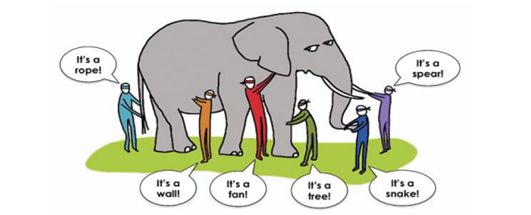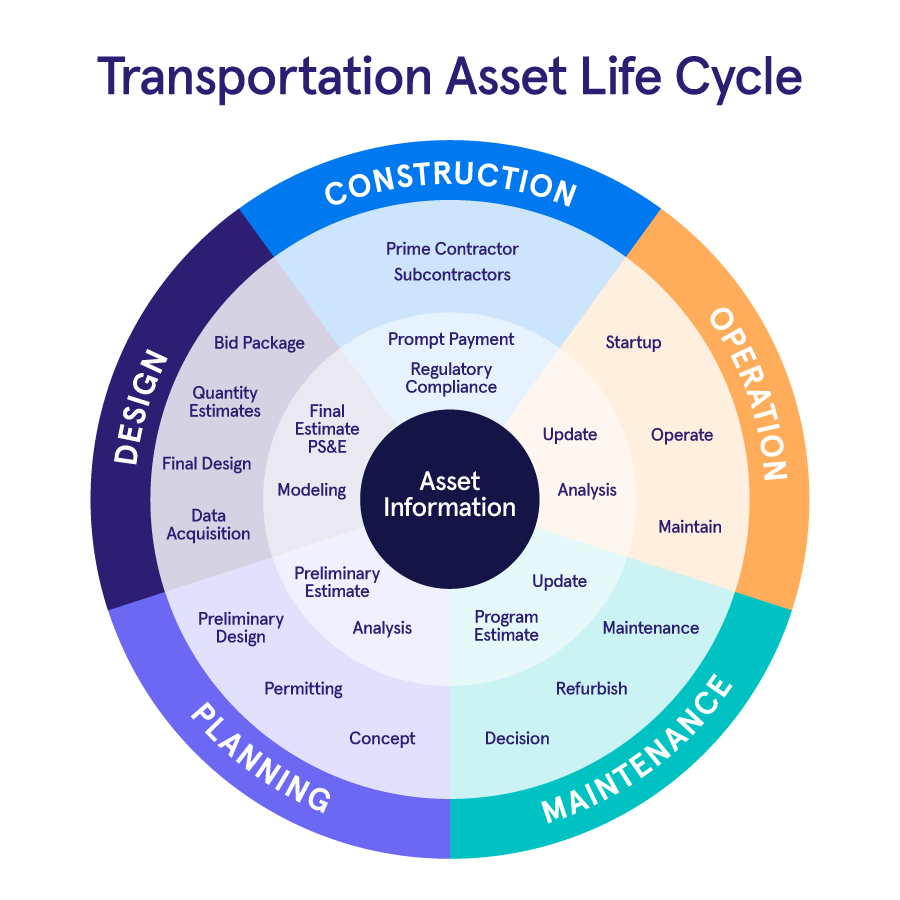There have been tens of thousands of blogs over the years about Building Information Modeling (BIM). If we count other communication venues, the number is in the hundreds of thousands, if not millions. This is in no way a new topic. So, what can we offer different than anyone else? I’m glad you asked.
Infotech has focused on digital tools for construction (often referred to as e-Construction) for close to four decades – before the term even existed. I, myself, am starting my fourth decade in e-Construction and have been involved with BIM ever since the acronym was first created. BIM and e-Construction are not the same, but they are so intertwined that we can’t really have one without the other. While some narrow BIM and e-Construction to the actual design and building of an asset, early BIM projects like CrossRail in the United Kingdom quickly identified the supply chain as critical in the overall BIM project success. We seem to forget that from time to time. It may be that BIM in transportation in the US is not as mature a BIM activity as it is in places like the UK or Denmark, so we don’t always see the big picture.
Now, do not get me wrong. I do not think our design and construction processes are second to any in the world, we just have not taken the time to step back and see just how close we are to actually using BIM. We are using e-Construction – boy, are we using e-Construction – and our supply chain is involved as well.
So, let’s talk about how BIM, e-Construction, and the supply chain all come together for those of us in the transportation industry. Before we get in too deep, let’s make sure we are all on the same page on basic stuff.

BIM and e-Construction can mean different things to different people or organizations. The National Building Information Model Standard Project Committee defines BIM as a digital representation of physical and functional characteristics of a facility. Building information models (BIMs) are files (usually in proprietary formats and containing proprietary data) which can be extracted, exchanged or networked to support decision-making regarding a built asset. Current BIM software is used by individuals, businesses, and government agencies who plan, design, construct, operate, and maintain diverse physical infrastructures, such as water, refuse, electricity, gas, communication utilities, roads, railways, bridges, ports, and tunnels.
The Federal Highway Administration (FHWA) defines e-Construction as a paperless construction administration delivery process that includes electronic submission of all construction documentation by all stakeholders, electronic document routing/approvals (e-signatures), and digital management of all construction documentation in a secure environment allowing distribution to all project stakeholders through mobile devices.
While none of these definitions are all-encompassing or exactly how organizations embrace either technology, they are close enough for us to get the gist that these are deeply interconnected and even dependent upon one another, with regards to a successful project.
So, if you can accept the idea that BIM and e-Construction belong together and provide synergy that improves the life cycle of not only the project but the asset you are creating (designing and building), let’s think about our supply chain. In its purest form, the supply chain might be defined as a system of organizations, people, activities, information, and resources involved in supplying a product or service to a consumer. Supply chain activities involve the transformation of natural resources, raw materials, and components into a finished product that is delivered to the end customer. In sophisticated supply chain systems, used products may re-enter the supply chain at any point where residual value is recyclable. Supply chains link value chains.
If you will allow me to take a little liberty here, I’d like to think of the supply chain as not only the goods, but also as the flow of information between and within the different phases of a transportation asset’s lifecycle. The chart below is a very generic form of an asset lifecycle. We can all debate the individual pieces, break into more minute parts, or merge areas, but here it is only intended to get the mind to think of an asset having life and living continuously until it is decommissioned. But in reality, when was the last time you decommissioned a road? Actually, I have a few in my career but they have been rare. It has been more likely in structures or even railroads but it’s rare for roads.

So, if we are in the cycle – The Circle of Life if you and your children are Lion King fans – there is a continuous movement of information and activity about the asset and decisions to be made and acted upon. Often, we tend to think only about the phase we are in – transitioning to or transitioning from. In today’s world, we no longer have the luxury to be myopic and focus on only our part. We must have vision for the asset as a whole. I think we know that the cost decisions and actions increase from planning to design to construction and continue to do so all the way through maintenance. That’s why it’s so important that our vision sees the entire asset lifecycle. What does that have to do with BIM? Once again, I am so glad you asked.
We have what is termed as Levels of Development (LOD) in BIM. Actually, a better way to think of it is Level of Detail (LODt). These levels define where your organization or project is in embracing the concepts of BIM. In its most basic form, there are 4 Levels of Detail, 0-3. As defined by the BIM standards:
- Level 0 describes unmanaged CAD (Computer Aided Design).
- Level 1 describes managed CAD in 2D or 3D.
- Level 2 involves developing building information in collaborative 3D environment with data attached but created in separate discipline models.
- Level 3 has yet to be defined in detail, but it is thought that it will include a single, collaborative, online, project model including construction sequencing, cost and lifecycle management information.
Notice how these definitions are centered around digital data, thereby further substantiating the precept that BIM and e-Construction have a synergy. Notice that Level 2 moves quickly into a collaborative environment, where many projects are today. Ultimately, we all want to get to Level 3 where we have the vision to see the full lifecycle of the asset we are creating and maintaining. While some may think they are stuck at Level 0 or 1, who is not collaborating on information today? If you are using the latest software (of the last 3-4 years) from Bentley or Autodesk, you may not realize it, but you are modeling. Maybe not 100% or not as effective as you should, but you are modeling.
I contend many of you in the transportation industry are further along in your LODt than you realize, but there is more work to be done in organization. But I want to change the title of that lifecycle image temporarily from “Transportation Asset Lifecycle” to “Transportation BIM Lifecycle” and pretend we are getting ready to move to LODt 3. Look inward into the BIM Lifecycle. There are some items in there that we may not have previously thought of as part of BIM. Permitting! Bidding! Payment! Compliance! Materials! Analysis! All of these are readily identified as part of e-Construction. But if they are part of e-Construction, then does it not make sense that they are part of our BIM world as well? To me, it does.
Hopefully, I have encouraged you to look at your assets and BIM with a wider lens. This is the 50K foot level. In the next blog post in our BIM series, I’ll drop down a little lower and look at how the new BIM facets fit with our traditional design and construction BIM and discuss the importance of collaboration in all of this. Are you with me still?
A Note on BIM and e-Ticketing:
As highlighted in this article, BIM and e-Construction are inextricably linked by the flow of information. As part of FHWA’s e-Construction initiative, they have been touting the benefits of e-Ticketing. e-Ticketing allows suppliers to send material ticket data electronically to project stakeholders, including contractors, haulers, and Departments of Transportation (DOTs). The electronic ticket data includes all of the information that would be on a paper ticket and thus can completely eliminate that need for hand-to-hand ticket transfers. Due to the ongoing pandemic, we’ve partnered with Command Alkon to offer an e-Ticketing solution at no cost for a limited time. Learn more here: /eticketingforall/.